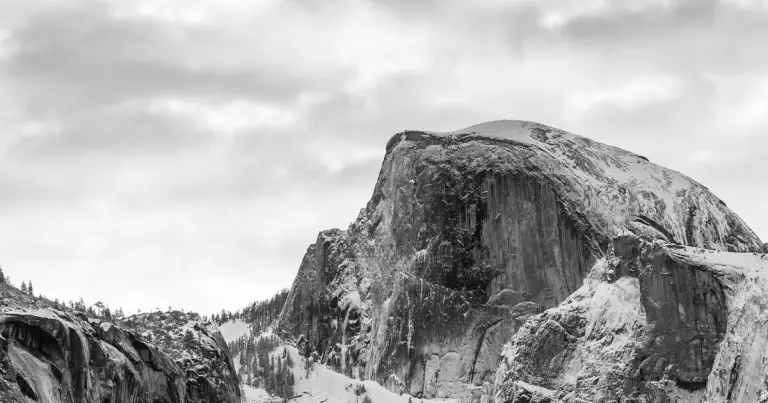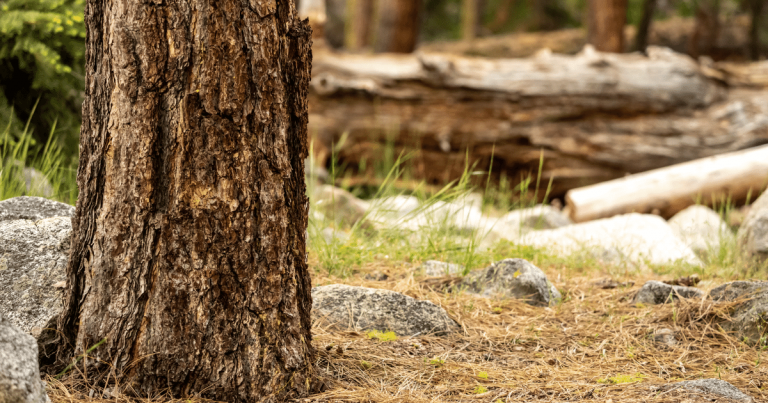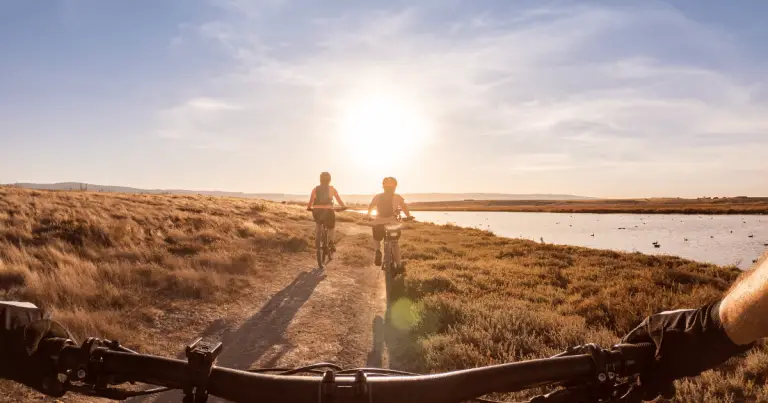The Ultimate Guide to Hiking the Grand Canyon Rim to Rim
The Grand Canyon is undoubtedly one of the most breathtaking natural wonders of the world with its incredible size and colorful layers. Hiking the Grand Canyon Rim to Rim is a once-in-a-lifetime experience and a bucket list item for many adventure seekers. This intense hike offers a challenging and rewarding journey through the stunning landscape of the Grand Canyon.

Plan Ahead
The first step to hiking the Grand Canyon Rim to Rim is planning. You will need to decide when you want to go, how long you want to hike, and which route you want to take.
Permits and Regulations
Before embarking on your hiking Grand Canyon rim to rim, it’s vital to understand the necessary permits and regulations set by the National Park Service. All overnight hikers are required to obtain a Backcountry Permit. These permits are in high demand, so it’s advisable to apply as early as four months in advance.
The National Park also enforces certain regulations for the safety and preservation of the canyon. For example, campfires are prohibited below the canyon rim, and all trash must be packed out.
Gear and Equipment
Equipping yourself with the right gear is indispensable for a successful Rim to Rim hike. The most fundamental item is a sturdy, comfortable pair of hiking boots, specifically designed for challenging terrains. A supportive backpack is also important, it should have enough space to accommodate your supplies but be light enough to not add unnecessary weight.
Packing Tips
When packing, keep the weight as low as possible. Each piece of equipment should be carefully considered for its necessity versus its weight. Pack your backpack in a way that distributes weight evenly to avoid strain. Heavier items should be packed close to your back and centered in your pack to maintain good balance.
Considerations for the Challenging Terrain
The Grand Canyon’s challenging terrain requires specific gear. Trekking poles can provide extra stability and support on steep trails. Given the extreme temperature variations, layer your clothing to adjust to the changing conditions. Sun protection, such as a hat, sunglasses, and sunscreen, is essential, and don’t forget a first-aid kit for emergencies. Despite the arid environment, flash floods are a risk, so pack a lightweight rain jacket just in case.
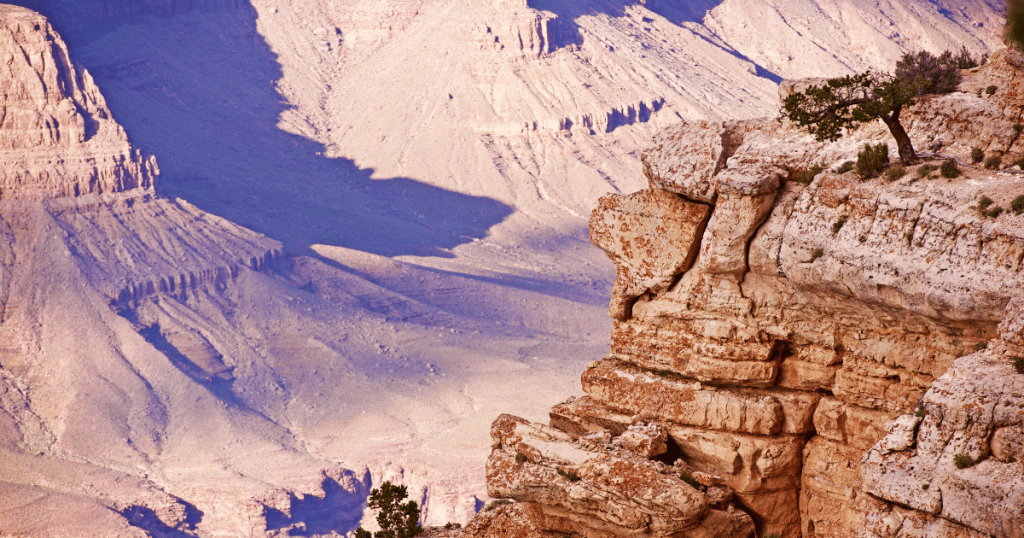
Physical Conditioning
The Grand Canyon Rim-to-Rim hike is a strenuous endeavor that demands a high level of physical fitness and endurance. To conquer the arduous paths, steep inclines, and extreme temperatures, it’s important to start a physical conditioning regimen at least three months before your hike.
Fitness Preparation
Before embarking on your hike, gradually build up your cardiovascular fitness through aerobic exercises like running, cycling, or swimming. These activities not only improve your heart health but also boost your lung capacity, key for the high-altitude environment of the Grand Canyon. Strength training is equally important, focusing on the major muscle groups that you’ll rely on during your hike, such as your legs, core, and lower back.
Training Tips
Start with moderate exercises and progressively increase the intensity and duration as your fitness improves. Incorporate hill workouts in your routine to mimic the uphill and downhill sections of the trail. Additionally, train with the backpack you plan to use on your hike, gradually adding weight to simulate the load you’ll carry. This will help you get used to the weight and improve your balance.
Endurance-Enhancing Exercises
Endurance is vital for the long-distance hike through the Grand Canyon. Long, steady hikes or runs, preferably on hilly terrain, help build this stamina. Incorporating exercises like lunges, step-ups, and squats into your routine can significantly boost your leg strength, thereby enhancing your climbing and descending abilities.

South Rim to North Rim
The classic South Rim to North Rim route is the most popular option for Rim to Rim hikers. This rim-to-rim Grand Canyon runs about 24 miles and provides a diverse range of scenic views, geological features, and wildlife encounters.
Bright Angel Trailhead Kickoff
Starting your journey from the South Rim, the Bright Angel Trailhead serves as the kick-off point for many Rim-to-Rim hikers. Nestled near the Grand Canyon Village, the trailhead is easily accessible and provides facilities like restrooms and a small shop.
As you begin your descent, the sweeping views of the Grand Canyon unfurl before you. The trail is well-maintained and includes rest houses and water stations along the way, making it a safe and convenient option for hikers. However, don’t be fooled by the relative ease of the initial descent; the trail is steep and the ever-changing weather conditions can make the journey challenging.
Reaching Phantom Ranch
After leaving the Indian Garden, the trail will lead you further into the depths of the canyon, culminating at Phantom Ranch, one of the most iconic stops on the Rim to Rim hike. Nestled at the bottom of the canyon, Phantom Ranch offers a much-needed reprieve for weary hikers.
Here, you will find dormitory-style cabins and campsites, a canteen serving hot meals, and a post office, the only one in the country delivering mail by mule. This tranquil haven, surrounded by towering canyon walls and the gushing Colorado River, is an idyllic spot to relax, refuel, and prepare for the next leg of your journey.
Crossing the Colorado River
One of the most thrilling aspects of the Rim to Rim hike is crossing the majestic Colorado River. This significant milestone in your journey marks the transition from the South Rim to the North Rim.
The river crossing is facilitated by two bridges, the South Kaibab Bridge (also known as the Black Bridge) and the Bright Angel Bridge (or the Silver Bridge). Both bridges are well-engineered and secure. However, the river’s swift currents and winds can make the crossing challenging.
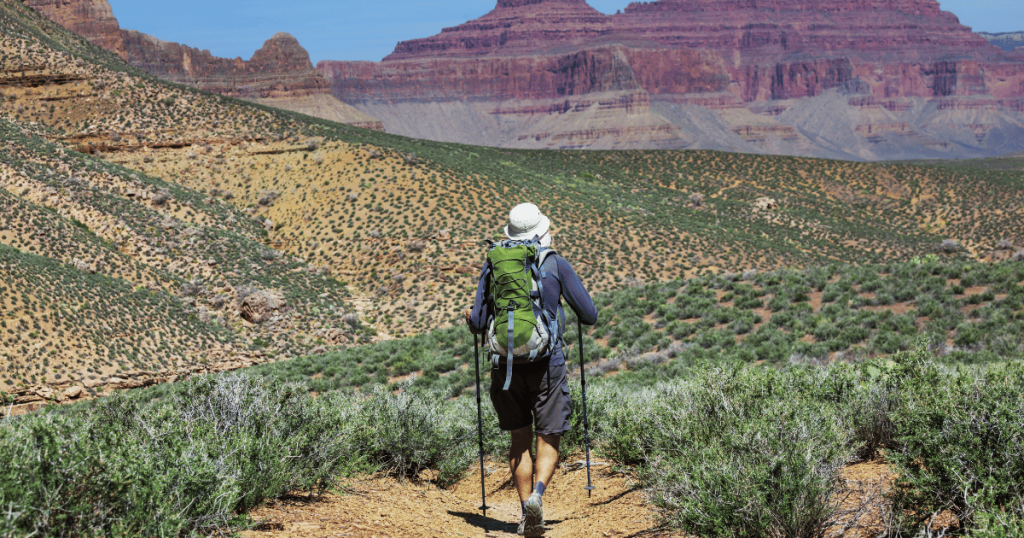
North Kaibab Trail Ascent
The North Kaibab Trail ascent offers a unique set of challenges and rewards, marking the final part of your Rim to Rim hike. The trail is steep, rocky, and often exposed to the sun, making the climb physically demanding. However, the sense of accomplishment, coupled with the breathtaking panoramic views, makes the effort worthwhile.
Challenges
The first few miles after leaving the Colorado River are relatively flat, but the trail then begins a steady, strenuous ascent towards the North Rim. The North Kaibab Trail is generally less maintained than the south side trails, so hikers should expect rugged terrain and areas of loose rock. The high altitude can also make breathing more difficult, especially for those not adjusted to it. Staying hydrated is crucial, but water sources are sparse along the trail, so you need to carry plenty of water with you.
North Rim to South Rim: Exploring the Alternate Route
Starting from the North Rim and aiming for the South Rim offers an alternative route, reversing the order of the journey compared to the classic Rim to Rim hike. This route is less crowded, offering a more solitary experience and the chance to see the Grand Canyon from a different perspective.
North Rim Descent via North Kaibab Trail
Upon deciding to initiate the return journey from the North Rim, hikers must prepare themselves for a unique set of experiences as they descend via the North Kaibab Trail. While the solitude of the North Rim and the physical test of the ascent remain fresh in mind, the descent reveals the Grand Canyon’s contrasting landscapes and geological marvels from a new perspective.
Roaring Springs and Cottonwood Campground: Essential Stops
After the initial descent from the North Rim, hikers encounter two significant landmarks: Roaring Springs and the Cottonwood Campground.
Roaring Springs is a powerful water source that bursts from the canyon walls, resulting in a cascade of water that is both an awe-inspiring sight and a critical water source for the Grand Canyon. A short spur trail leads to this spring, where hikers can rest and observe the spectacle.
South Rim Victory: Completing the Challenge
The final stretch of this epic journey, the push to the South Rim, demands every ounce of energy and determination you have left. The elevation increases rapidly, challenging your stamina and endurance.
As you ascend, you’ll traverse through steep switchbacks of the Devil’s Corkscrew and traverse the starkly beautiful expanse of the Tonto Platform, before embarking on a grueling climb up the Jacob’s Ladder. The South Rim offers a unique, breathtaking perspective of the Grand Canyon, unfolding in an array of colors and textures that change with the shifting light.
Final Thought
The Rim to Rim hike in the Grand Canyon is a journey of unparalleled beauty and challenge, offering brave hikers an unforgettable experience. It’s a testament to the grandeur of nature, revealing a kaleidoscope of landscapes and geological wonders.
This trek demands physical stamina and mental resilience, but rewards with awe-inspiring vistas and a profound sense of accomplishment. Whether you opt for the South Rim to North Rim route, or choose the less trodden path from North to South, the journey will undoubtedly be an epic adventure, etching indelible memories and a deep appreciation for the vast, wild beauty of the Grand Canyon.

